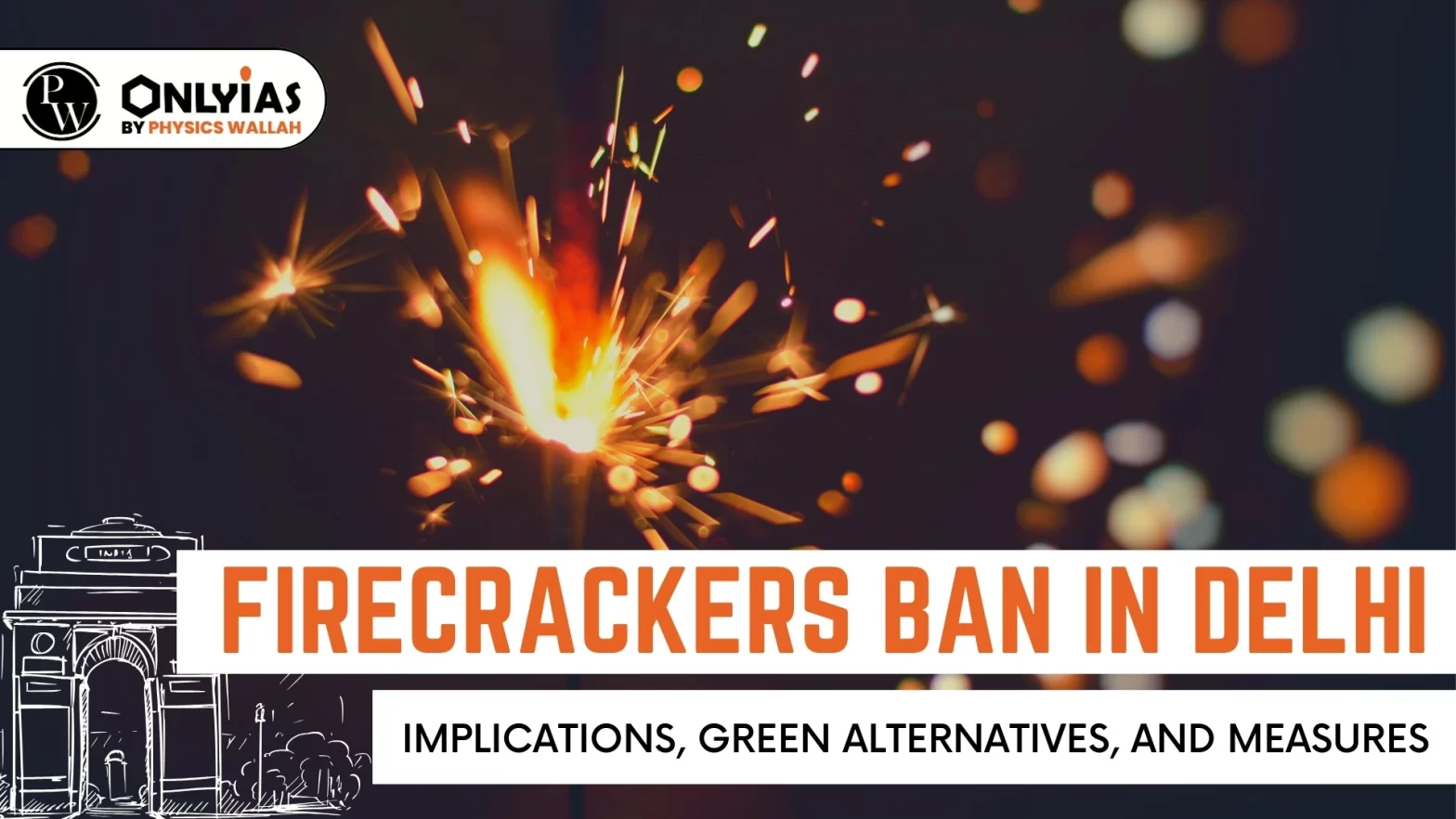Context: The Government of Delhi has suggested complete firecrackers ban in the Union Territory.

Read Also: Diwali: The Festival of Lights and Triumph of Good Over Evil
| Must Read | |
| NCERT Notes For UPSC | UPSC Daily Current Affairs |
| UPSC Blogs | UPSC Daily Editorials |
| Daily Current Affairs Quiz | Daily Main Answer Writing |
| UPSC Mains Previous Year Papers | UPSC Test Series 2024 |
Firecrackers are explosive devices used primarily to produce a large amount of noise and visual effect, usually for the purpose of celebration or entertainment.
The Government of Delhi has completely banned manufacturing, storage, sale and use of firecrackers for its role in causing air pollution.
By prohibiting the use of firecrackers, the levels of air and noise pollution can be lowered, leading to an improvement in air quality and a reduction in the overall pollution levels in Delhi.
Green crackers are a type of firecrackers, designed to cause less air and noise pollution as compared to traditional firecrackers.
Green crackers were developed by National Environmental and Engineering Research Institute (NEERI), which comes under the Council for Scientific and Industrial Research (CSIR) in 2018.
SWAS (Safe Water Releaser), SAFAL (Safe Minimal Aluminium) and STAR (Safe Thermite Cracker) are the types of green firecrackers.
Sivakasi, located in Virudhunagar district of Tamil Nadu, is known as the hub of firecrackers manufacturing in India.

<div class="new-fform">
</div>